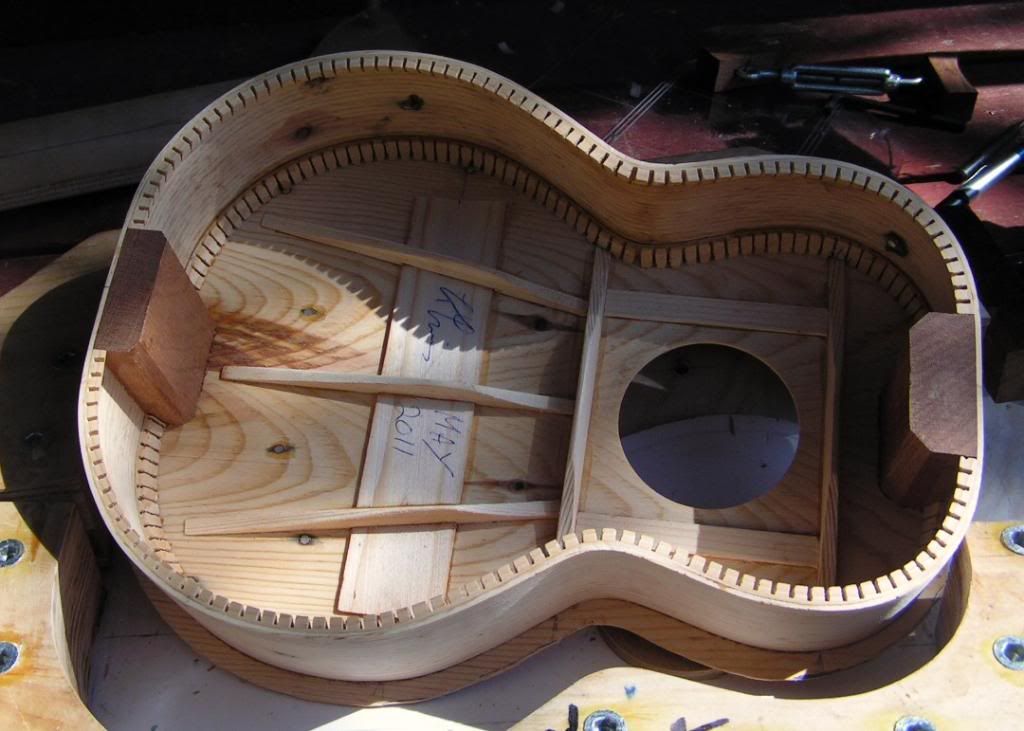sequoia
Well-known member
I'm putting on a redwood top on a smashed tenor ukulele as a sort of side reclaimation project and decided on this bracing scheme. I've decided to follow Pete's adage to Build Light! as a sort of experiment to see how light is too light.

The top is about <75 thick (<2.0 mm). The "fan" spruce bracing is 3/16 thick and 5/32 high. Pretty thin. The bridge plate is 3/32 thick. I'm not concerned with the two cross-braces on the upper bout, but only with the lower bout bracing. The braces in the picture are not glued in or final scalloped. I think the scheme might be OK, but I'm becoming concerned with the possibility of the bridge dipping down and forward. NOT a good thing. Could just be paranoia I don't know.
I know enough about bracing theory to know that I don't really know anything about it. More black-magic with a touch of hocus-pocus. However, I thought I might put in two struts in front of the bridge plate to cool my mind. Something just tells me this is a bad idea (red line in picture below). I will probably just go with it as is unless someone says, "STOP! UNDERBRACED! STOP!".

The repaired body awaiting its new top and fretboard... Still a lot of work to do.


The top is about <75 thick (<2.0 mm). The "fan" spruce bracing is 3/16 thick and 5/32 high. Pretty thin. The bridge plate is 3/32 thick. I'm not concerned with the two cross-braces on the upper bout, but only with the lower bout bracing. The braces in the picture are not glued in or final scalloped. I think the scheme might be OK, but I'm becoming concerned with the possibility of the bridge dipping down and forward. NOT a good thing. Could just be paranoia I don't know.
I know enough about bracing theory to know that I don't really know anything about it. More black-magic with a touch of hocus-pocus. However, I thought I might put in two struts in front of the bridge plate to cool my mind. Something just tells me this is a bad idea (red line in picture below). I will probably just go with it as is unless someone says, "STOP! UNDERBRACED! STOP!".

The repaired body awaiting its new top and fretboard... Still a lot of work to do.

Last edited:

